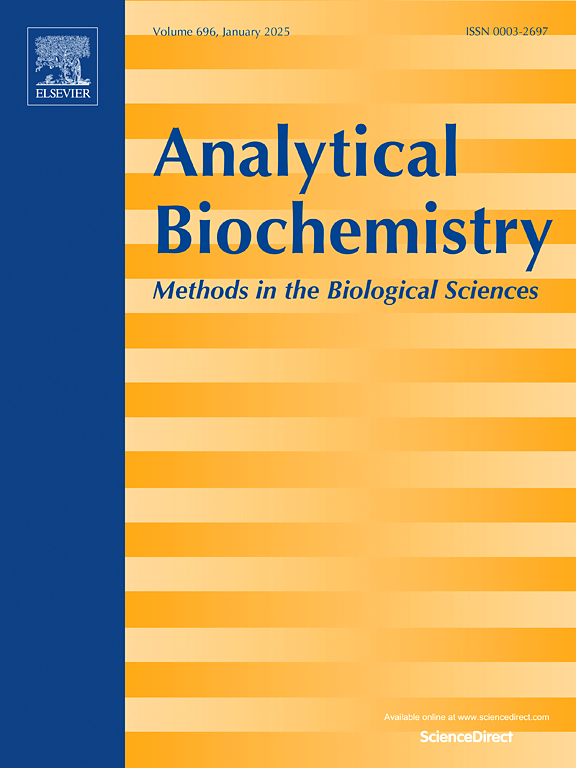Decoding ulcerative colitis: Plasma protein-mediated antibody immune responses influence disease risk
IF 2.5
4区 生物学
Q2 BIOCHEMICAL RESEARCH METHODS
引用次数: 0
Abstract
Objective
Previous Mendelian randomization (MR) studies have explored the role of plasma proteins in ulcerative colitis (UC), but the underlying mechanisms, particularly how plasma proteins influence UC risk via immune-mediated pathways, remain unclear. This study integrates two-sample MR and mediation analysis to investigate whether plasma proteins influence UC risk through antibody-mediated immune responses, aiming to identify novel biomarkers and therapeutic targets.
Methods
We analyzed 4907 plasma proteins from a genome-wide association study, 46 immune antibody responses, and UC data from the FinnGen consortium. Two-sample MR was used to assess causal relationships among plasma proteins, antibody responses, and UC. Mediation MR analysis was conducted to evaluate whether specific antibody responses mediate the effect of plasma proteins on UC risk.
Results
A total of 80 plasma proteins with significant causal associations with UC were identified (P < 0.05). Two antibody responses, Epstein-Barr virus (EBV) EA-D antibody levels and anti-HSV-1 IgG seropositivity, were significantly and inversely associated with UC risk (EBV: OR = 0.794, 95 % CI: 0.646–0.974, P = 0.027; HSV-1 IgG: OR = 0.891, 95 % CI: 0.801–0.992, P = 0.035). Five plasma proteins showed significant causal effects on these antibody responses: UBC, TIMD4, and NEFL (linked to EBV EA-D), and TMEM70 and HIF1A (linked to HSV-1 IgG). Mediation analysis revealed that antibody responses explained 9.2 %–13.2 % of the total effects of these proteins on UC risk. For example, UBC increased UC risk partially through reduced EBV EA-D antibodies (mediated effect = 0.0588), while HIF1A contributed to UC risk via suppressed HSV-1 IgG seropositivity.
Conclusion
This study identifies a novel immuno-genetic pathway in UC pathogenesis, where specific plasma proteins influence disease risk through modulation of viral antibody responses. These findings suggest potential targets, such as UBC, HIF1A, and TIMD4, for biomarker development and immune-focused interventions in UC.

解码溃疡性结肠炎:血浆蛋白介导的抗体免疫反应影响疾病风险
先前的孟德尔随机化(MR)研究已经探索了血浆蛋白在溃疡性结肠炎(UC)中的作用,但其潜在机制,特别是血浆蛋白如何通过免疫介导途径影响UC风险尚不清楚。本研究结合两样本MR和中介分析,探讨血浆蛋白是否通过抗体介导的免疫反应影响UC风险,旨在发现新的生物标志物和治疗靶点。方法我们分析了来自全基因组关联研究的4907种血浆蛋白、46种免疫抗体应答和来自FinnGen联盟的UC数据。双样本MR用于评估血浆蛋白、抗体反应和UC之间的因果关系。进行中介MR分析以评估特异性抗体反应是否介导血浆蛋白对UC风险的影响。结果共鉴定出80种与UC有显著因果关系的血浆蛋白(P <;0.05)。eb病毒(EBV) EA-D抗体水平和抗hsv -1 IgG血清阳性与UC风险呈显著负相关(EBV: OR = 0.794, 95% CI: 0.646-0.974, P = 0.027;1型单纯疱疹病毒免疫球蛋白:= 0.891,95%置信区间CI: 0.801 - -0.992, P = 0.035)。五种血浆蛋白对这些抗体反应有显著的因果影响:UBC、TIMD4和NEFL(与EBV EA-D相关),以及TMEM70和HIF1A(与HSV-1 IgG相关)。中介分析显示,抗体反应解释了这些蛋白质对UC风险的总影响的9.2% - 13.2%。例如,UBC部分通过降低EBV EA-D抗体增加UC风险(介导效应= 0.0588),而HIF1A通过抑制HSV-1 IgG血清阳性增加UC风险。结论本研究确定了UC发病机制中的一种新的免疫遗传途径,其中特异性血浆蛋白通过调节病毒抗体反应影响疾病风险。这些发现提示了UC生物标志物开发和免疫干预的潜在靶点,如UBC、HIF1A和TIMD4。
本文章由计算机程序翻译,如有差异,请以英文原文为准。
求助全文
约1分钟内获得全文
求助全文
来源期刊

Analytical biochemistry
生物-分析化学
CiteScore
5.70
自引率
0.00%
发文量
283
审稿时长
44 days
期刊介绍:
The journal''s title Analytical Biochemistry: Methods in the Biological Sciences declares its broad scope: methods for the basic biological sciences that include biochemistry, molecular genetics, cell biology, proteomics, immunology, bioinformatics and wherever the frontiers of research take the field.
The emphasis is on methods from the strictly analytical to the more preparative that would include novel approaches to protein purification as well as improvements in cell and organ culture. The actual techniques are equally inclusive ranging from aptamers to zymology.
The journal has been particularly active in:
-Analytical techniques for biological molecules-
Aptamer selection and utilization-
Biosensors-
Chromatography-
Cloning, sequencing and mutagenesis-
Electrochemical methods-
Electrophoresis-
Enzyme characterization methods-
Immunological approaches-
Mass spectrometry of proteins and nucleic acids-
Metabolomics-
Nano level techniques-
Optical spectroscopy in all its forms.
The journal is reluctant to include most drug and strictly clinical studies as there are more suitable publication platforms for these types of papers.
 求助内容:
求助内容: 应助结果提醒方式:
应助结果提醒方式:


